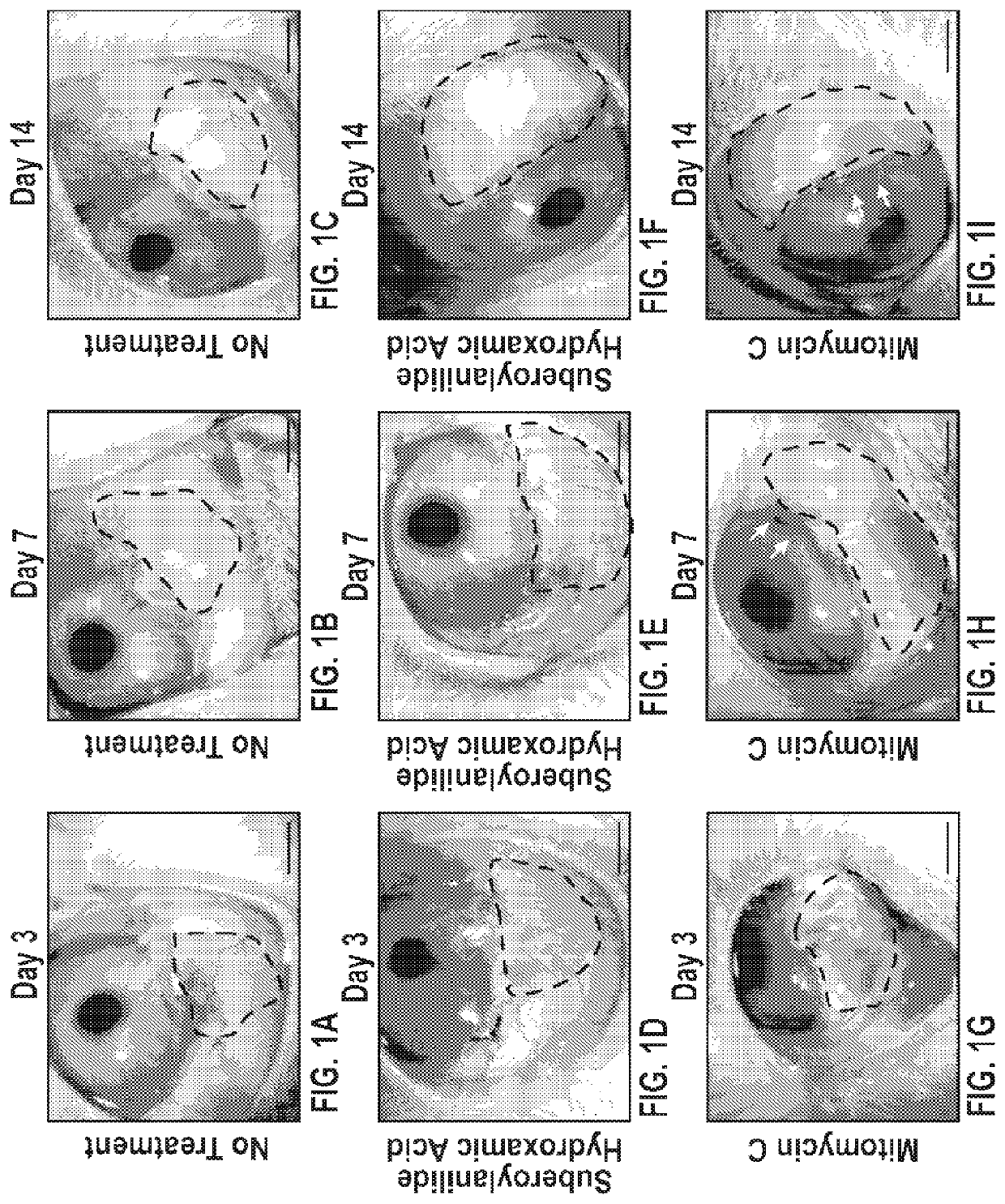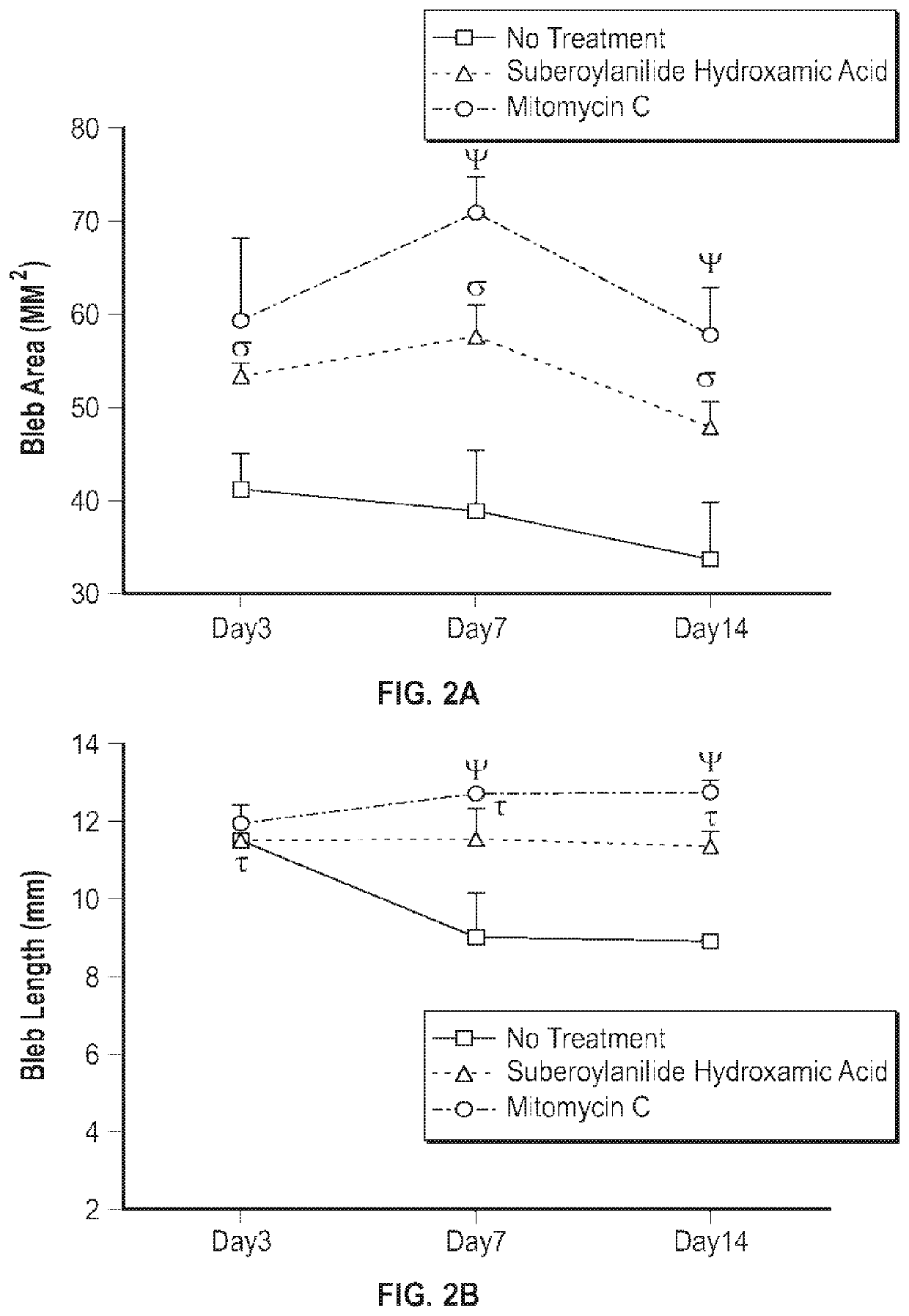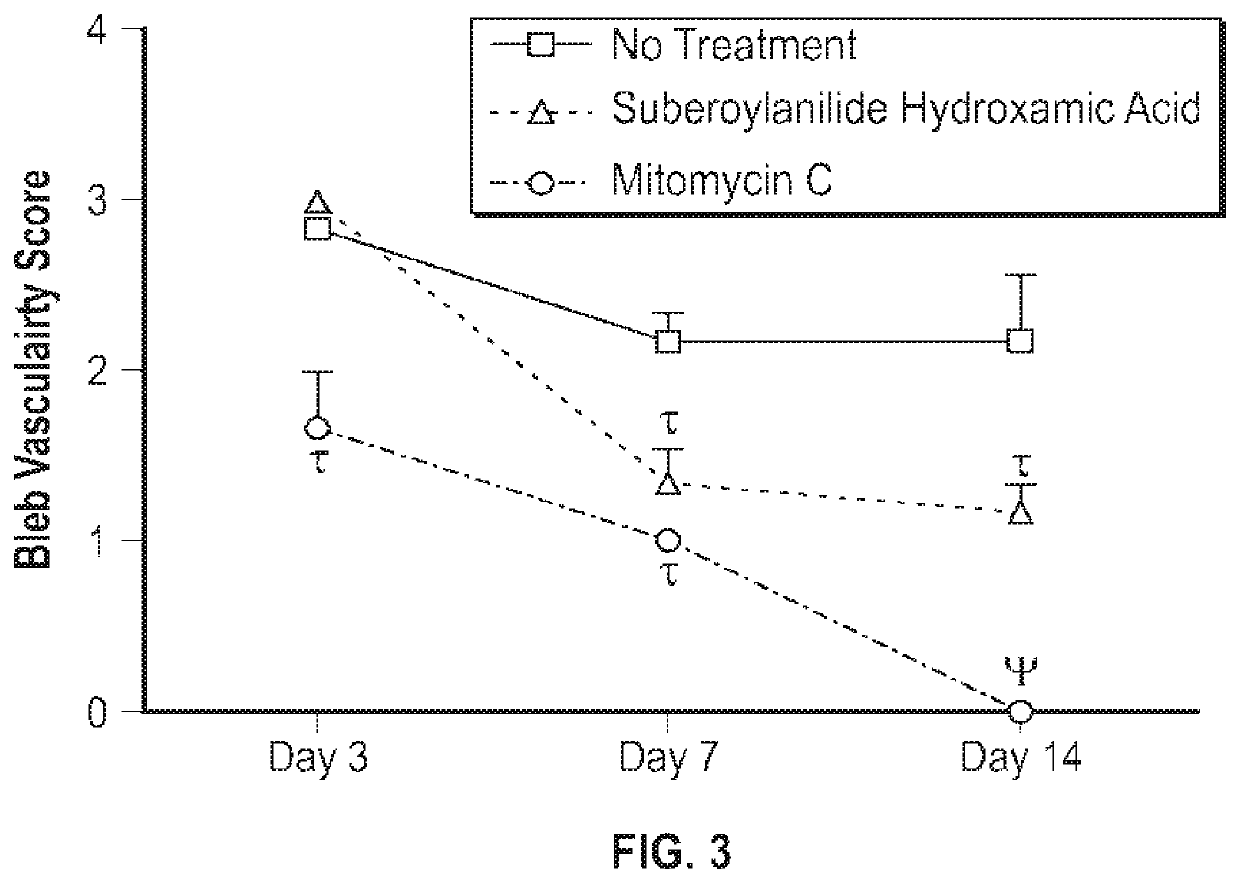Methods and compositions for promoting wound healing with decreased scar formation after glaucoma filtration surgery
a technology of scar formation and wound healing, applied in the field of ophthalmic diseases, can solve the problems of fibrosis over filtering bleb, excessive ecm synthesis, large patient population that does not respond adequately to topical drug therapy to reduce iop, etc., and achieves the effect of assessing the long-term or stable effectiveness of the invention method, and reducing the density of keratocytes
- Summary
- Abstract
- Description
- Claims
- Application Information
AI Technical Summary
Benefits of technology
Problems solved by technology
Method used
Image
Examples
example 1
bitor (HDACi) Prevents Excessive Wound Healing and Scar Formation in Rabbit Model of Glaucoma Filtration Surgery
Material and Methods
Background
[0077]Briefly, a rabbit model of glaucoma filtration surgery (GFS) was used. Rabbits underwent GFS received Balanced Salt Solution (BSS) or SAHA (50 μM) or mitomycin C (MMC; 0.04% (w / v)). Clinical scores of intraocular pressure (TOP), bleb vascularity and slit lamp examination were performed. On postoperative day 14, rabbits were sacrificed and the bleb tissues were collected for evaluation of tissue fibrosis with H&E, Masson trichrome (MT), α-smooth muscle actin (α-SMA), and F-actin staining. Further, SAHA-mediated acetylation of histones in corneal fibroblasts and conjunctiva were determined by western blot analysis.
Preparation of SAHA Solution and Treatment Regimen.
[0078]A 10 mM stock solution of SAHA (Cayman Chemical Company, Ann Arbor, Mich., USA) was prepared by dissolving in dimethyl sulfoxide (DMSO) and then further diluted to 50 μM wi...
example 2
bitor (HDACi) Prevents Corneal Haze Formation Long-Term, after Photorefractive Keratectomy (PRK) Surgery
Material and Methods
Background.
[0093]Briefly, corneal haze in rabbits was produced with −9.0 diopter PRK. A single application of SAHA (25 μM) or MMC (0.02%) was applied topically immediately after PRK. Effects of the two drugs were analyzed by slit-lamp microscope, specular microscope, TUNEL assay, and immunofluorescence.
Corneal Haze Production in Rabbit Eyes.
[0094]Photorefractive keratectomy was used to produce corneal haze in rabbits by performing −9.0 diopter ablation with the Summit Apex excimer laser (Model: SVS APEX Plus ER; Alcon, Ft. Worth, Tex.) as reported previously. Briefly, the rabbits were anesthetized and local anesthesia of the cornea was achieved through the application of topical ophthalmic 0.5% proparacaine hydrochloride (Alcon, Fort Worth, Tex.). A wire lid speculum was placed and corneal epithelium was removed by gentle scraping with surgical Beaver blade #64...
PUM
| Property | Measurement | Unit |
|---|---|---|
| time | aaaaa | aaaaa |
| time | aaaaa | aaaaa |
| time | aaaaa | aaaaa |
Abstract
Description
Claims
Application Information
 Login to View More
Login to View More - R&D
- Intellectual Property
- Life Sciences
- Materials
- Tech Scout
- Unparalleled Data Quality
- Higher Quality Content
- 60% Fewer Hallucinations
Browse by: Latest US Patents, China's latest patents, Technical Efficacy Thesaurus, Application Domain, Technology Topic, Popular Technical Reports.
© 2025 PatSnap. All rights reserved.Legal|Privacy policy|Modern Slavery Act Transparency Statement|Sitemap|About US| Contact US: help@patsnap.com



